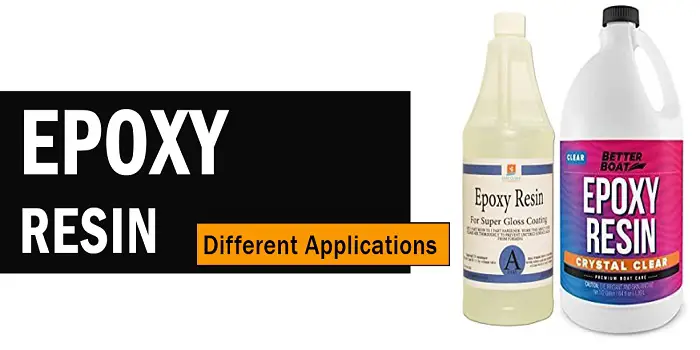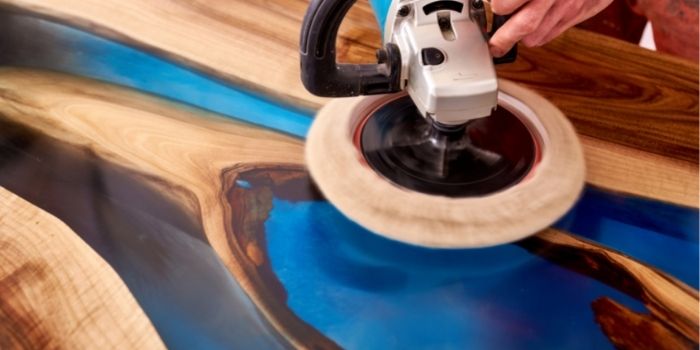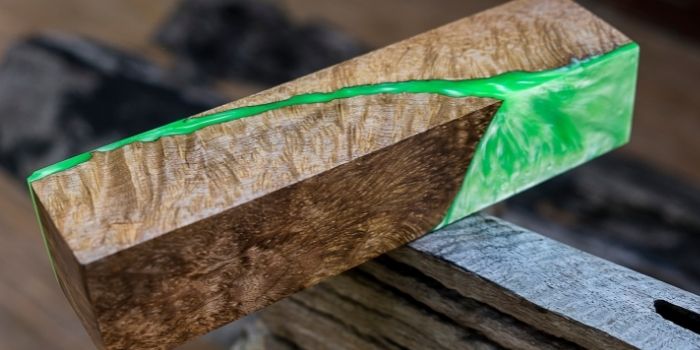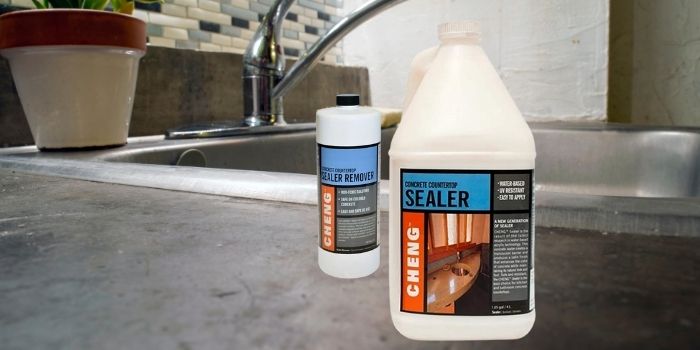
Epoxy resin is a unique chemical compound that is popular for its strong adhesive quality.
Scientifically speaking, epoxy resin is characterized by its long molecular structure with reactivity at each end of the chain.
This molecular chain property allows the epoxy resin to be resistant to heat and many different kinds of chemicals.
In layman’s terms, epoxy resin is used in any product that requires a strong adhesive.
The uses of epoxy resin range from construction material to intricate pieces of jewelry.
The main reason behind the vast popularity of this chemical compound is its compatibility with other materials such as wood, fabric, and even metal.
The only drawback of using epoxy resin in products is its vulnerability to water and moist conditions.
Repeated exposure to water is likely to result in a loss of the adhesive durability of epoxy resin – meaning that it is not a particularly reliable product to use in mass construction.
What's Here in the Article:
The Properties of Epoxy Resin
Epoxy resin is a thermosetting resin – meaning that the liquid form can transform into a hard solid and retain its shape when exposed to heat or radiation.
This process is known as curing and is irreversible since it alters the chemical bonds within the epoxy resin.
An epoxy resin consists of two hydrogen atoms that are each bonded to an oxygen atom.
Compounds containing these properties include polyphenolic compounds, amino phenols, aliphatic diols, diamines, etc.
Epoxy resins are commonly used because they have the important properties of being rigid and sturdy.
This allows the compound to adapt to a wide range of applications, allowing it to be used for multiple different purposes.
Apart from the curing process of using a hardening agent such as heat or radiation, it is also possible to harden epoxy resin using a chemical catalyst.
This process includes using a chemical that forces the epoxy resin to react with itself, thus hardening the material from liquid to solid.
While this is a possible technique of using epoxy resin, it is not commonly used since it is generally more costly than simply using heat.
Before we highlight the different uses of epoxy resin, it is important to understand a few of its features:
a) Chemical Resistivity:
Epoxies are known to remain stable when exposed to alkaline compounds, meaning that they have a high degree of chemical resistance.
However, epoxies are vulnerable to certain acids.
b) Bond with Substrates:
The reason why epoxy resin is commonly used is that it can work with many different materials.
When the epoxy bonds with a surface, the bond is very strong.
c) Compressive Strength:
Epoxies can undergo high-pressure levels without damaging the chemical compound or the bond.
d) No Shrinkage:
Unlike other materials, epoxy resin retains its shape during the curing process allowing the alignment of the surface to remain straight.
e) Good Electrical Insulators:
Epoxy resins are often used in construction materials since they are able to provide protection against electrical current.
f) No Corrosion:
Since it takes an extraordinarily long time for the epoxy resin to corrode, it can be said that it is resistant to corrosion.

The 7 Different Uses of Epoxy Resin
Epoxy resin has been used for different purposes for around 50 years now and is amongst the most useful plastics.
Here are a few different ways that epoxy resin is used:
1. Structural Adhesive
Since epoxy resin is known to hold its shape very firmly, it is often used as a structural adhesive.
This includes joining together the different components of vehicles, bicycles, and even aircraft.
2. Painting
Epoxy resin is used to manufacture paint that is used on household goods to ensure durability.
Commonly referred to as ‘powder coating,’ this epoxy paint is often used on products such as stoves, washing machines, or dishwashers.
Epoxy paint is ideal for such home and commercial appliances due to its easy clean-up and durable coating properties which prevent any damage to the product.
3. Coatings
Since one of the features of epoxy resin is its resistance to corrosion, it is commonly used as an outer coating on objects that are prone to rust.
This includes acidic metal containers or fittings that are often coated before being used.
4. Flooring
Epoxy resin is also becoming a popular choice for decorative flooring since it is a durable material and allows for customizations in floor patterns.
In some places where semi-transparent flooring is required, epoxy resin is used to coat the flooring.
Apart from being a popular choice, epoxy resin flooring is also highly environmentally friendly as opposed to traditional methods of flooring.
5. Household Repairs
Unsurprisingly, epoxy resin is used for the repair and maintenance of a range of household items due to its adhesive property.
Intricate items such as ceramics and glass can even be repaired using epoxy resin since the material is transparent and can securely glue together the broken pieces.
6. Electronics
Since epoxy resin is an electrical insulator, it is often used in the production of electronics such as transformers or generators that have huge amounts of electrical current flowing through them.
Using epoxy resin in such electronics also helps protect the items from unnecessary exposure to dust and moisture.
7. DIY Crafts
A new trend of using epoxy resins emerged when people started making small DIY crafts using the chemical compound.
Different types of color tints and glitters are used in conjunction with epoxy resin to create buttons, decorative pieces, and jewelry pieces such as pendants.

Different Types of Epoxy Resin and Their Uses
The number of variations to epoxy resin is infinite, which may make choosing the right one rather challenging.
However, despite the number that you find at your local hardware store, there are only a few types that are used for almost all jobs.
The rest are simply small variations that are available for specific types of jobs.
This means that if you know the common ones used, you can make the best-informed decision about which epoxy resin is right for your needs.
Put simply; there are three types of epoxy resin that are used more than any other.
They are the following.
- Pure Epoxy
- Polyester Resin
- Epoxy Acrylates
Understanding the differences between the three types will help you considerably when making a choice for your needs.
1- Pure Epoxy
Pure epoxy comes in two different categories, one component, and two-component.
If you know the difference, you can choose effectively between them.
One Component
This type of epoxy is considered more convenient to apply but not as strong as the two-component version.
And while cheaper to purchase, it may be more expensive in terms of the application process.
You can use this type of pure epoxy out of the container. This means no mixing and no preparation.
However, the speed you gain in using the epoxy right out of the container is slowed down by the requirement of heat to cure the product.
Many component epoxies come with what is called an “initiator,” which provides the heating element.
Otherwise, you will have to supply it yourself.
This type of epoxy takes up to one hour to cure at a temperature range of 350 to 400 degrees Fahrenheit.
Epoxy that requires induction curing can be performed at roughly the same temperature range for only five to seven seconds.
However, there is also one component epoxy that can be cured using ultraviolet or UV light. You can apply this type of light artificially or use sunlight.
Two-Component
You are probably familiar with two-component epoxy, as it is found in most hardware stores.
The components consist of the epoxy resin and the hardening agent.
The hardening agent is what applies the heat to the resin so that it cures properly.
This is known as polymerization, where the epoxy resin will become plastic or polymer when the process is completed.
The product itself will usually combine the two properties when applied, so you have a little time to spread and cover the area needed before it cures or hardens.
Because the hardening agent provides heat, it can cure in a short period.
However, you can speed that up if you add heat to the process.
Most two-component epoxy resins will cure in two to three hours.
But it may take up to eight hours depending on the conditions.
Adding additional heat may cure it in as little as five minutes.
Mixing the two ingredients properly is crucial for the resin to harden.
Otherwise, it may be weak in the areas where the mixture is not complete.
Plus, any bubbles present will need to be removed. Otherwise, it will weaken the resin as well.
However, even though the resin will cure in a matter of hours, it is important not to apply any real stress or tension for seven days to allow for full, complete curing.
The seven days will allow the resin to become plastic or polymer and withstand the stresses that are required of it.
Is One Component or Two-Component Better for Your Needs?
This decision is not as difficult as it may initially sound because, for most small projects, the two-compound epoxy resin is the right choice.
This is because the product is easy to use and can be applied to different materials, which include wood.
The two-component epoxy will include the following ingredients, all made with epoxy.
- Primers & Paste Fillers
- Glues & Resins
- Consolidates
Because the two components complement each other, the chemical reaction will result in a strong bonding process.
This means that using two-component epoxy resin makes the most sense for your needs in most cases.
The three main advantages are as follows.
- Easy to Use
- Stronger Bond
- Cures at Room Temperature
However, there are some advantages to using one component of epoxy resins, depending on their use.
You will mostly find the one-component versions used in manufacturing.
They are normally applied to materials that will be baked or cured, which means that they can be used quickly to speed up production.
And since the baking cures the epoxy along with finishing the product, the entire process goes much faster.
Another advantage is that you do not have to focus on the mixing ratio.
While a one-to-one ratio is normal for most two-component epoxy resins, some brands require a different ratio.
This means that you must focus on getting the ratio right. Otherwise, you risk the curing process being uneven and with weak points.
2- Polyester Resin
Another product often used in woodworking and with similar results compared to one and two-component epoxy resins is polyester or polymer resin.
And while the results are generally the same, it should be noted that polyester resin is not epoxy.
But this product does have some considerable advantages, which include the following.
- Low Cost
- More Durable than Epoxy
- Resists Water and Many Chemicals, including Acid
- Heat Resistant
But with the advantages come a few disadvantages as well which is why they are often restricted to woodworking and certain industrial uses.
- Difficult to Mix Properly
- More Toxins
- Fewer Substrates for Bonding Purposes
- Horrible Odor
However, the most important difference is that polyester resin does not bond quite as strongly as epoxy.
This can make a difference depending on your project.
3- Epoxy Acrylates
This is a cross between epoxy and polyester resins, with the results being a little of both.
Epoxy acrylics are generally cured using UV light which means that they harden quickly which makes them easy to work with.
Plus, they are chemical resistant, can be tailored for use on specific materials, and one version is free of volatile organic compounds (VOCs), which make them safe for indoor use.
The Final Word
Epoxy resin is a chemical compound that has become largely popular due to its vast range of uses.
While the use of epoxy resin began in large projects such as construction and electrical appliances, the application range is continuing to grow at a faster pace.
Since the compound has many beneficial properties, is easy to use, and does not have any safety warnings for usage, it is also now being used to mend decorative household items or even to make some fun DIY crafts at home.
No matter for what purposes you use it, try to apply it patiently and avoid the common epoxy mistakes.
This will allow you to enjoy the benefits and fine results for years to come.
Share the post "What is Epoxy Resin – What Do You Use it For?"

Douglas Becker (aka Painter Doug) has over twenty years of experience as a painter in Adkins, Texas. At present, he resides in Florida with his family.
From painting multi-storeyed houses, condos, and apartments to large commercial buildings and small offices, he had served various customers in areas not only in Adkins but also in Southwest Florida, Sarasota, Naples, and many more. To know more about him check here.




